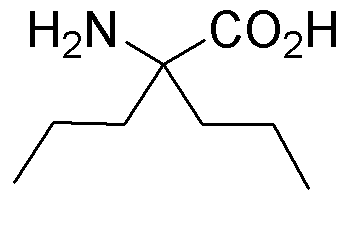Di-n-propylglycine is widely utilized in research focused on:
- Neuroscience Research: This compound is studied for its potential role as a neurotransmitter modulator, which may help in understanding and treating neurological disorders.
- Pharmaceutical Development: It serves as a building block in the synthesis of various pharmaceuticals, particularly in developing drugs that target metabolic pathways.
- Amino Acid Supplementation: Used in dietary supplements, it may enhance athletic performance and recovery by supporting muscle metabolism.
- Biochemical Studies: Researchers utilize it to investigate metabolic processes and enzyme activity, providing insights into cellular functions.
- Food Industry Applications: It can be used as a flavor enhancer or stabilizer in food products, improving taste and shelf life.
General Information
Properties
Safety and Regulations
Applications
Di-n-propylglycine is widely utilized in research focused on:
- Neuroscience Research: This compound is studied for its potential role as a neurotransmitter modulator, which may help in understanding and treating neurological disorders.
- Pharmaceutical Development: It serves as a building block in the synthesis of various pharmaceuticals, particularly in developing drugs that target metabolic pathways.
- Amino Acid Supplementation: Used in dietary supplements, it may enhance athletic performance and recovery by supporting muscle metabolism.
- Biochemical Studies: Researchers utilize it to investigate metabolic processes and enzyme activity, providing insights into cellular functions.
- Food Industry Applications: It can be used as a flavor enhancer or stabilizer in food products, improving taste and shelf life.
Documents
Safety Data Sheets (SDS)
The SDS provides comprehensive safety information on handling, storage, and disposal of the product.
Product Specification (PS)
The PS provides a comprehensive breakdown of the product’s properties, including chemical composition, physical state, purity, and storage requirements. It also details acceptable quality ranges and the product's intended applications.
Certificates of Analysis (COA)
Search for Certificates of Analysis (COA) by entering the products Lot Number. Lot and Batch Numbers can be found on a product’s label following the words ‘Lot’ or ‘Batch’.
*Catalog Number
*Lot Number
Certificates Of Origin (COO)
This COO confirms the country where the product was manufactured, and also details the materials and components used in it and whether it is derived from natural, synthetic, or other specific sources. This certificate may be required for customs, trade, and regulatory compliance.
*Catalog Number
*Lot Number
Safety Data Sheets (SDS)
The SDS provides comprehensive safety information on handling, storage, and disposal of the product.
DownloadProduct Specification (PS)
The PS provides a comprehensive breakdown of the product’s properties, including chemical composition, physical state, purity, and storage requirements. It also details acceptable quality ranges and the product's intended applications.
DownloadCertificates of Analysis (COA)
Search for Certificates of Analysis (COA) by entering the products Lot Number. Lot and Batch Numbers can be found on a product’s label following the words ‘Lot’ or ‘Batch’.
*Catalog Number
*Lot Number
Certificates Of Origin (COO)
This COO confirms the country where the product was manufactured, and also details the materials and components used in it and whether it is derived from natural, synthetic, or other specific sources. This certificate may be required for customs, trade, and regulatory compliance.


